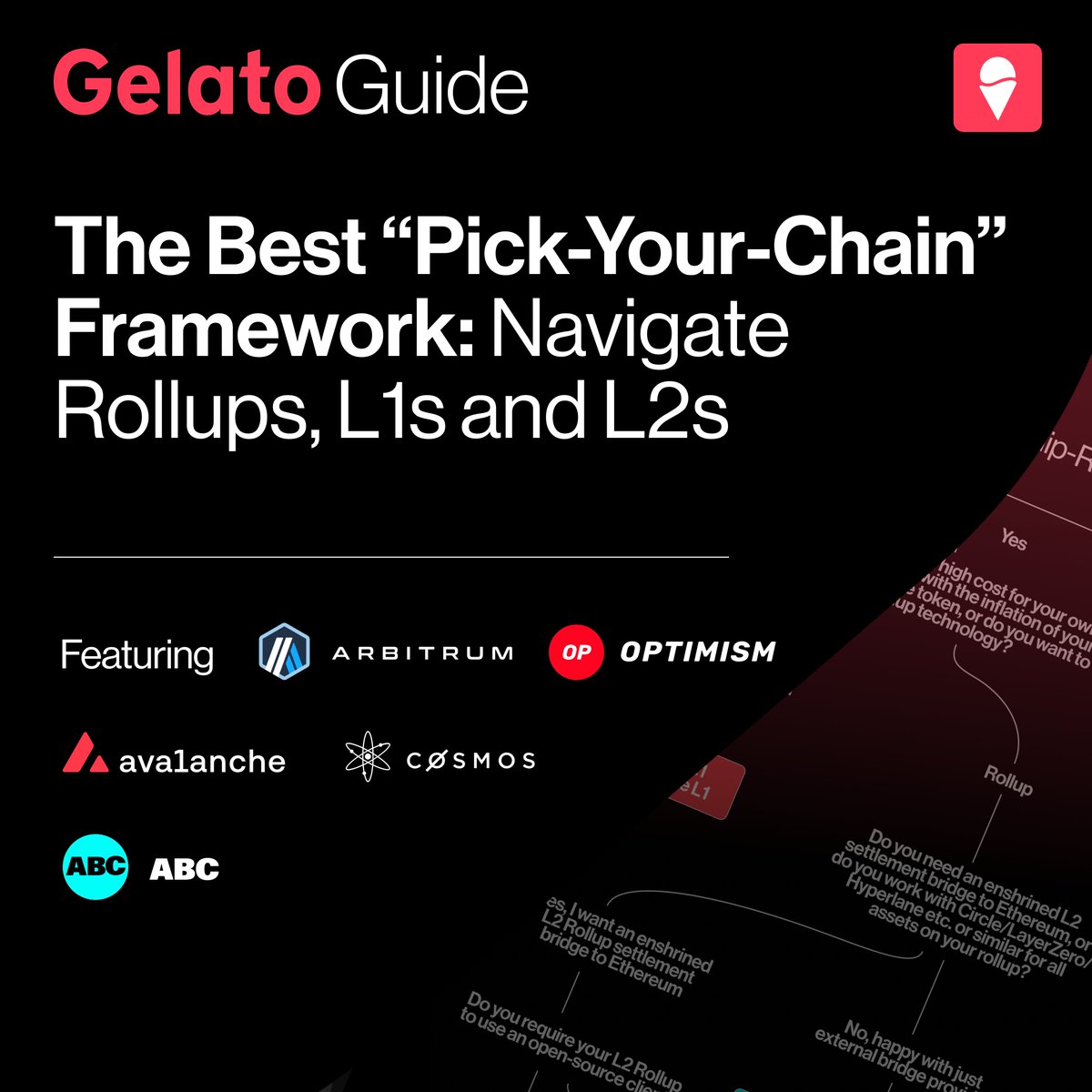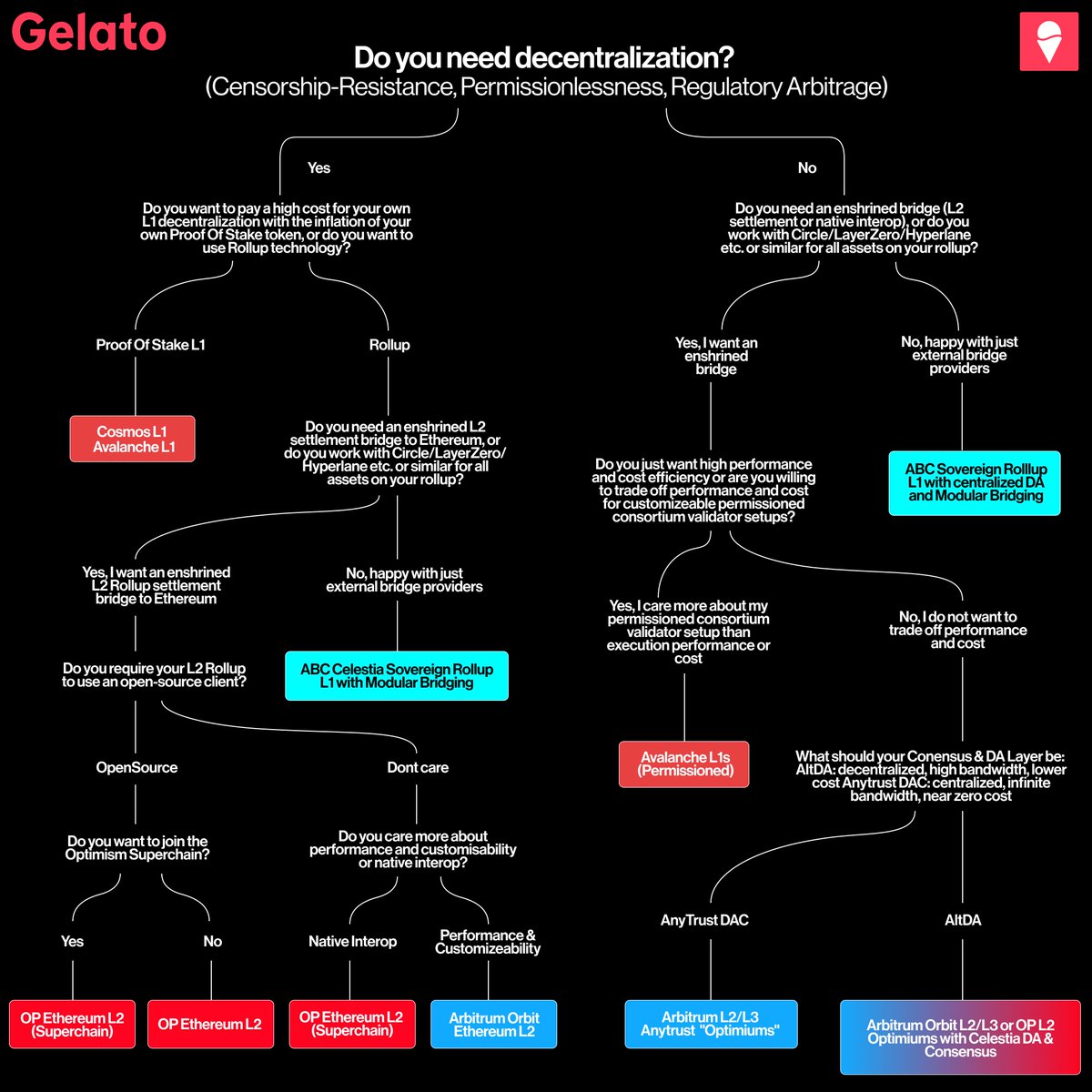Launching your own chain? That’s step one.
The real question is—what kind of chain should it be?
Monolithic L1s or Modular Rollup L1s and L2s?
Use the “Pick-Your-Chain” framework to decide on the right architecture for your chain↓

This framework guides you to the ideal blockchain stack for your project by aligning technical and operational priorities like decentralization, cost, performance/speed, bridging, and UX.
See below for the "Pick-Your-Chain" framework ↓

Choosing a blockchain stack means juggling decentralization, performance/speed, and cost.
Ethereum L2s like Arbitrum Orbit & OP Stack offer strong trust guarantees — but that 7-day fraud window? A huge destroyer of capital efficiency and UX.
ZK Rollup frameworks such as @SuccinctLabs are shifting that dynamic.
With near-instant finality and no dispute period, they slash bridging latency and improve cross-chain UX — a huge leap for decentralized apps.
Adoption’s early, but momentum is building.
Looking for an Ethereum-aligned rollup stack?
• Use @optimism OP Stack if you need an open-source client
• Prioritize interoperability? The OP Stack is built for it
• Join the Superchain for a shared standard across L2s
A good fit for teams aligning with Ethereum-standardization efforts.
Prioritizing performance and custom execution?
• @arbitrum Orbit supports enshrined Ethereum bridging
• Offers flexibility for custom execution environments
• Can integrate with altDA like Celestia for scalability
Arbitrum AnyTrust DAC and Orbit with @celestia DA have traction with high-speed, low-cost use cases where centralization is acceptable.
Looking beyond L2 rollups? How about Rollup L1s?
• Sovereign Rollup L1s on @celestia use modular DA and consensus
• No enshrined bridge—integrate with @Layerzero_Core, @Hyperlane, @circle CCTP, or opt out entirely
• Retain rollup benefits without L2 dependencies
→ @abundance_xyz ABC is the middle ground for teams seeking L1 sovereignty without rolling their own consensus network.
Optimizing for performance and UX in trusted institutional settings?
• @avax Avalanche L1s offer architectural flexibility
• Ideal for compliance-oriented CeDeFi, gaming, and consortium chains
• Start permissioned (PoA), migrate to their own PoS network if/when needed
A flexible option for high-speed apps with known participants.
The “Pick-Your-Chain” framework is evolving:
• ZK Rollups (like OP Succinct) aren’t fully integrated yet, but promise faster bridging + lower capital cost
• Native Rollups tap Ethereum’s execution directly via precompiles
• Based Rollups use Ethereum validators for sequencing—no extra tokens or governance
→ All signal a shift toward simpler, more decentralized designs.
Read our full "Pick-Your-Chain" framework guide to make the right call based on real trade-offs.
Dive in ↓
Want to launch your own rollup?
Deploy on Gelato RaaS—the most reliable platform with 99.99% uptime, real-time monitoring, and all the Web3 tools and services you already use.
Your chain. One click. On .
6.94K
34
The content on this page is provided by third parties. Unless otherwise stated, OKX is not the author of the cited article(s) and does not claim any copyright in the materials. The content is provided for informational purposes only and does not represent the views of OKX. It is not intended to be an endorsement of any kind and should not be considered investment advice or a solicitation to buy or sell digital assets. To the extent generative AI is utilized to provide summaries or other information, such AI generated content may be inaccurate or inconsistent. Please read the linked article for more details and information. OKX is not responsible for content hosted on third party sites. Digital asset holdings, including stablecoins and NFTs, involve a high degree of risk and can fluctuate greatly. You should carefully consider whether trading or holding digital assets is suitable for you in light of your financial condition.

